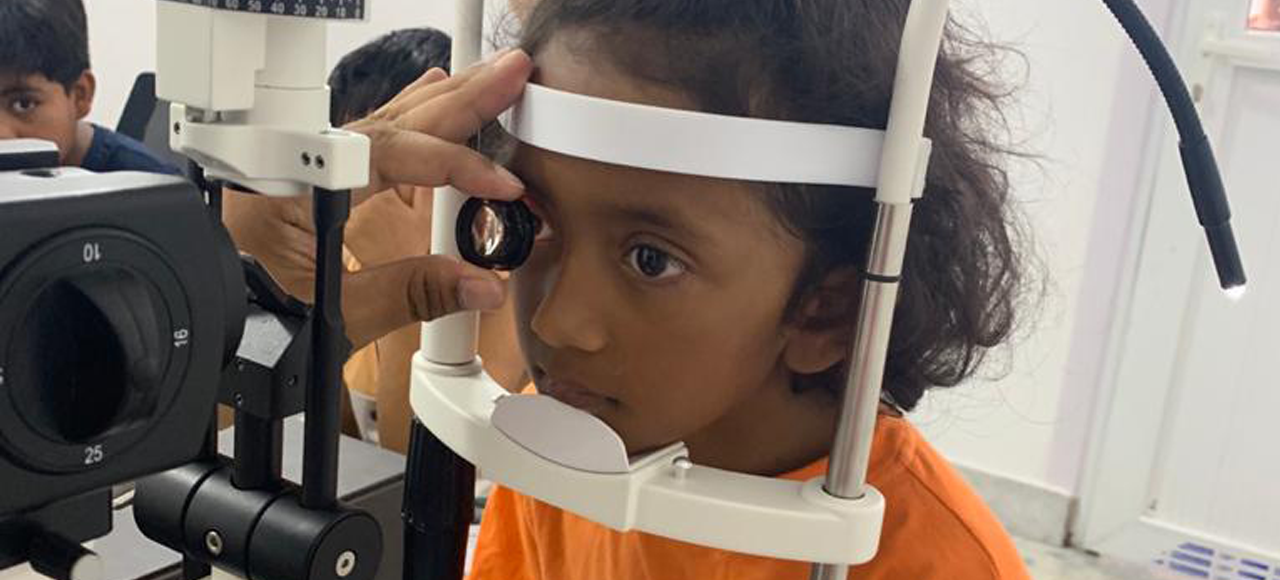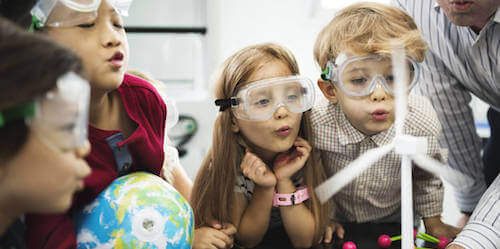 Growing up healthily in the Himalayas
Growing up healthily in the Himalayas
Basic medical care for children in Nepal
Sangita's parents had been wondering for some time why their daughter did not learn to speak like the other children. Sangita was already almost four years old and spoke only a few coherent words - and even those only slurred. In addition, she almost always had a cold, but that was not uncommon. Nevertheless, they finally took the child to the Kirtipur hospital for a medical examination. Otherwise, how would she be able to start school soon? The examination revealed that Sangita suffered from a permanent accumulation of fluid behind the eardrum and could therefore not hear properly! How would she be able to learn to speak properly? Following the treatment, she made rapid progress and began to enjoy speaking and be interested in language. If there had been regular check-ups like in many countries, the delay in Sangita's development would not have happened at all.
Necessity
Health services for newborns, children and adolescents in Nepal.
Activity
Carrying out medical screening examinations for the early detection and treatment of illnesses and developmental disorders.
Countable effort
Number of examinations, screenings and check-ups carried out in hospitals and medical camps.
Result
Children's disorders are detected earlier and can be treated better. The children grow up healthier and are absent from school less often.
Systemic effect
Improving health and development opportunities for children and young people in the region.
Background
In Nepal, the mountainous and rugged Himalayan country in southern Asia, providing neonatal and child care is a major challenge: On average, there is only one doctor per 1,300 inhabitants (by comparison, Germany 1 : 235) (WHO, 2020). Comprehensive medical care is only available in a few large cities. The proportion of children under 14 years of age is almost 30 per cent of the population (CIA, 2021). The costs of medical examinations and treatment usually have to be covered by the people themselves, as there is no comprehensive health insurance. Reconstruction after the dramatic earthquake of 2015 has taken years. But since then, significant improvements in maternal and child mortality have been recorded: In 2019, under-5 mortality was 31 per 1,000 live births, a 78 per cent reduction from 1990 levels (UNICEF, 2020). However, these gains have threatened to stagnate since the Covid-19 pandemic. People are visiting medical facilities much less – whether for fear of infection or for financial reasons, for example because tourists are not coming and unemployment has risen. While about one third of the population was already living below the poverty line before the pandemic (Worldbank, 2019), the situation has now worsened. Therefore, the further expansion of medical infrastructure as well as screenings and prevention work to improve the health of the population are essential.
The good deed
With your good deed today, you enable a medical examination for a newborn, a child or a young person in Nepal. This could be, for example, a hearing or eye test, a physical or a dental check-up. The examination will take place at the Kirtipur Hospital or as part of a so-called "camp" in more remote villages. In this way, illnesses can be detected at an early stage and treated more easily and effectively. Regular check-ups also convey knowledge about health and sickness, which children and their families can integrate into their everyday lives.

AboutNepal
Kathmandu
Capital
29,136,808
Number of inhabitants
1,155 USD
Gross domestic product per capita per year
142 of 189
Human Development Index
From the subtropical south to the highest mountain on earth, Mount Everest, in the north: Nepal offers breathtaking scenery and impressive animal and plant diversity.
About the organization and further information
Association
Nepalmed e.V.
Website

Further information and source
- CIA, 2021. The World Factbook 2021, Stand: 24.03.2021, Washington, D.C.
- Nepalmed e.V., 2021. Vereins-Homepage: Infos zu Projekten, Facebook-Seite: aktuelle Berichterstattung, Stand: 01.04.2021, Grimma.
- UNICEF, 2021. Country Profiles Nepal: key demographic indicators, Stand: 29.03.2021, New York.
- Tag 3
- UNICEF, 2021. Country Profiles Nepal: key demographic indicators, Stand: 29.03.2021, New York.




